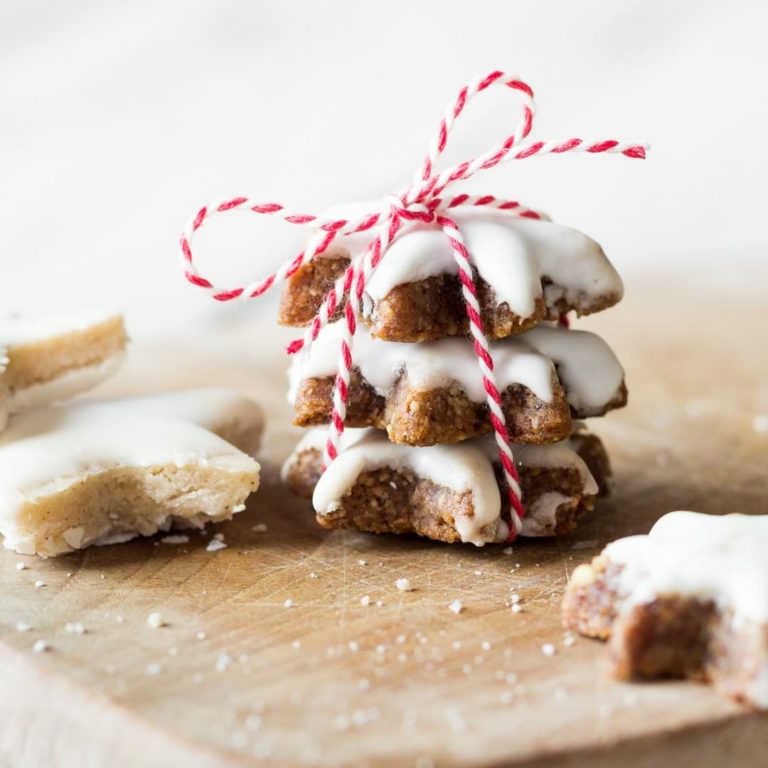German cookies, as difficult as their names may sound are remarkably flavorsome and is quite a rage worldwide especially for their unique appearance and premium quality.
Made from quality ingredients, these cookies are created from age-old recipes that have been perfected over generations.
One can dig into some traditional scrumptious vanilla crescents, rich butter cookies or some deliciously glazed chocolate ones. They all look yummy.
Why wait for the winters? Try some of the amazing Christmas cookies like Spritz biscuits or Zimtsterne. They will definitely lighten up your festive mood.
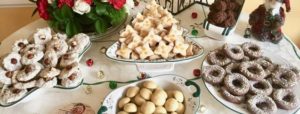
Lebkuchen
A German Christmas is incomplete without its favorite, the traditional Lebkuchen cookies.
Lebkuchen derived from the German word ‘Leben’ meaning “favorite food” and ‘kuchen’ meaning cake is the part of every household during Christmas.
Traditionally heart-shaped, the cookie comes in all sizes and designs and is very similar to gingerbread biscuits but is less crispy.
During Christmas, one can see the markets are beaming with the aroma of these cookies which are often chocolate glazed or covered with thin icing.
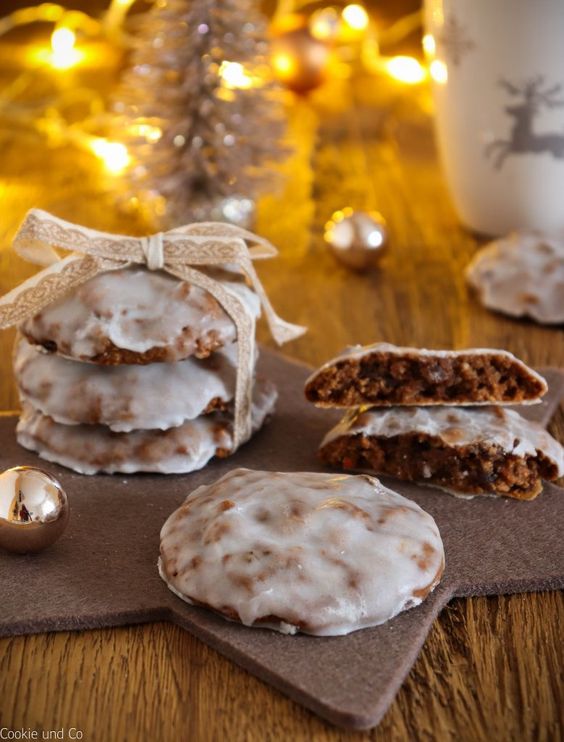
Vanillekipferl
These mouth-watering crescent-shaped cookies were originally made of flour, walnut, vanilla sugar, and butter. But now ground almonds and hazelnuts are also added giving it a different texture.
These delicious half-moon cookies are perfect for every season and are prepared throughout the year. They can be a classic choice for warm summer afternoons or you can just binge on them with coffee on chilly wintry mornings.
The cooking procedure is really simple. Crescents are made from fresh doughs, baked and then coated with powdered sugar and your favorite cookie is ready.
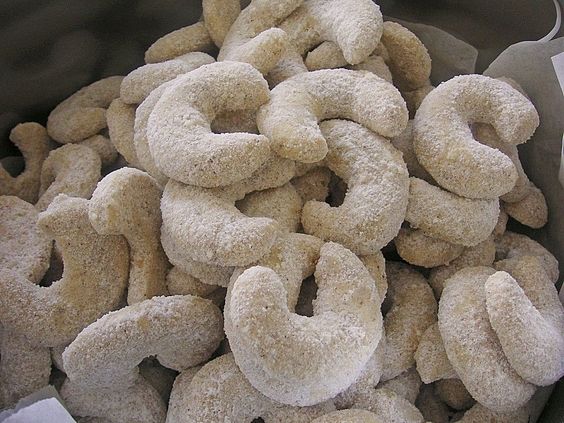
Springerle
Springerle one of the most authentic cookies dates back to the early 16th century. It originated in Bavaria and Austria.
It is believed that these cookies were prepared during the Julfest celebrations among the German tribes in midwinter. Poor people used to offer token sacrifices in the form of animal-shaped cookies and hence the cookies are still stamped with images.
These cookies are made from flour dough, egg, and sugar. Then the doughs are cut into rectangular or circular shapes. Images are then imprinted on the soft doughs with Springerle rolling pins or flat molds.
The cookies are then baked which enhances the designs even more. Sometimes acrylic or tempera colors are also added to use them for decorations.
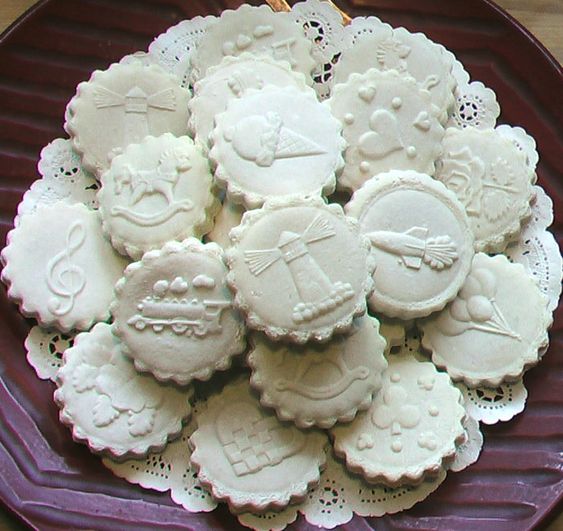
Pfeffernüsse
Spice up your Christmas celebrations with these peppery and salty cookies.
Pfeffernüsse is slightly different as the addition of cinnamon and pepper gives them a sharp taste quite similar to gingerbread.
Pfeffernüsse meaning “pepper nuts” surprisingly does not have any nuts in them. They were named because of their small size like that of whole nuts.
Light and airy, these cookies add warmth to your palette with the use of cloves, mace, and nutmeg.
After baking the cookies are tossed with powdered sugar, hard icing glaze or even honey coated which balances the spiciness.
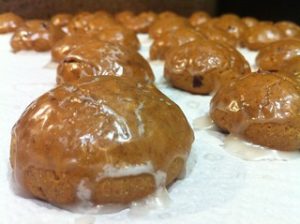
Bethmännchen
Bethmännchen is a traditional German pastry that originated in Frankfurt and is an integral part of every Christmas celebration. The pastry shaped like almond halves has a beautiful story to tell.
It is believed that Simon Moritz Bethmann, first developed this cookie back in 1838. He had four children thus the four almond halves. However, after the death of his son Heinrich, the cookies continued to have only three halves; the recipe still remains the same.
The cookie recipe is really simple and takes only 10 minutes to bake. The cookies are made from regular flour, eggs, sugar powder, marzipan, rosewater, and ground almonds.
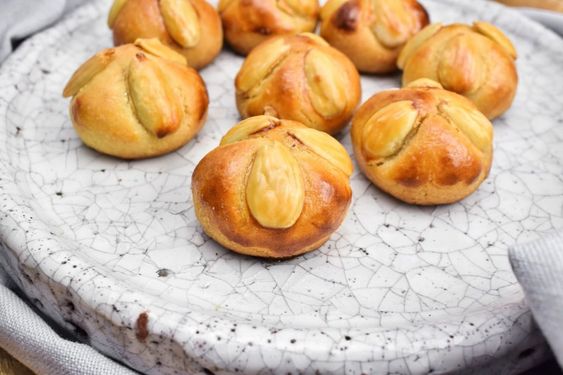
Heidesand
Gorge into some premium buttery sugar-coated Heidesand cookies this winter and get a taste of authentic German cuisine.
Derived from the word “heath sand”, this cookie originated in the beautiful heathland area in northern Germany. The cookie will definitely remind you of the sandy beaches and the beautiful terrains of the land.
There are different variations of the cookie available in the market. You can have the sandy beige gingerbread, the orange ones, or the rosemary versions. You will simply love them.
The melted brown butter adds a creamy texture to the cookies along with the crushed sugar which gives it a rich flavor.
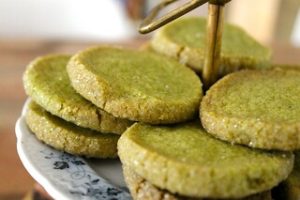
Zimtsterne
Zimtsterne looking like classic Christmas stars are light and tasty and is a part of Advent offerings and Christmas celebrations.
Zimtsterne is slightly different from other cookies as it breaks the monotony of sweetness with the hint of cinnamon which gives it an edge.
The cooking ingredients are quite similar to traditional bakeries. You can also add some raw almonds and kirschwasser (optional) to the cookie batter.
Use a cookie cutter to give it the desired star shape. Powder it with some sugar dust or you can also add some cranberry or walnut for decorations.
